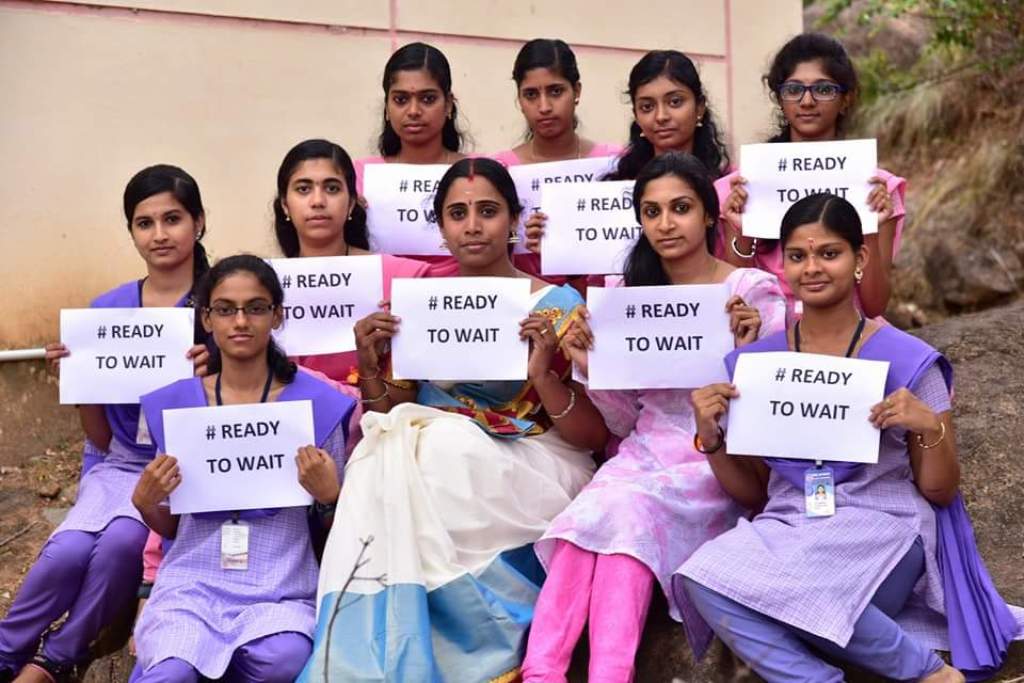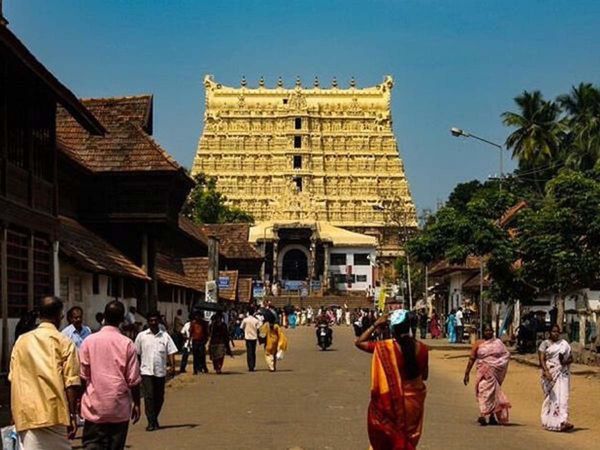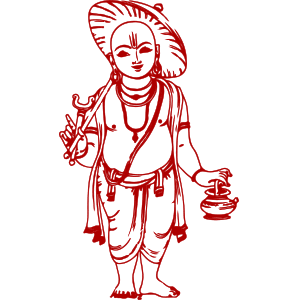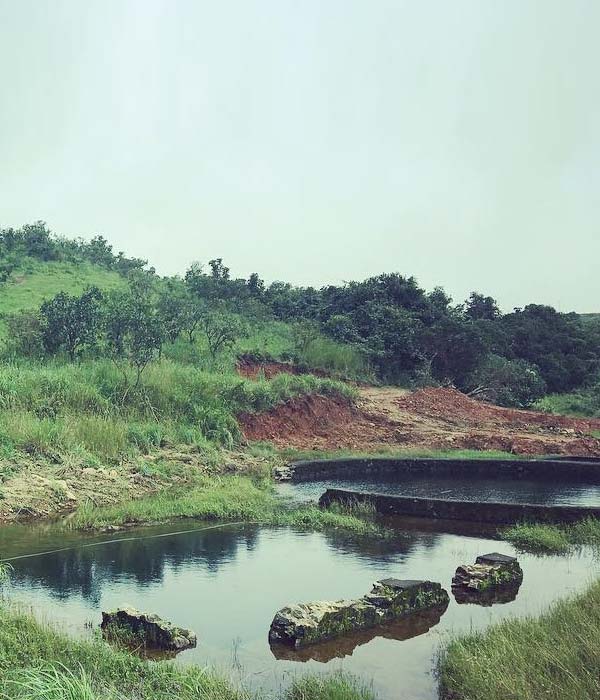By S.J.R. Kumar, National Vice Chairman, SASS
Sri Chithira Thirunal BalaramaVarma, the erstwhile ruler of Travancore, signed an agreement with the Government of India known as the Covenant, during May 1949, which led to the formation of a joint state of Travancore and Kochi as part of the annexation of the princely states to India. Under this vast and historic agreement which covers many issues, the ownership and management of the SreePadmanabhaSwamy Temple were fully vested in the royal family. After the death of Sri ChithiraThirunal Balarama Varma on 19.07.1991, his younger brother Sri UthradamThirunal Marthanda Varma became the heir to the royal family according to the customs and rules of the royal family.
The State of Thiru-kochi, formed under the Covenant, passed a law on temples in 1950 called the “Travancore-Kochi Hindu Religious Institutions Act”, which stated that, among other things, the ownership and administration of the Sreepadmanabha Swamy Temple would be vested in the royal family of Travancore. It was later approved by the newly formed Kerala State Legislative Assembly. In the case of the SreePadmanabha Swamy Temple and the Pandaram (related to God) properties, the rights of the King of Travancore before the Covenant came into force under this Act were retained and given legal protection beyond question even from challenging it in the Supreme Court.
However, in 2007, with the backing of some political organizations, few individuals filed a complaint in the lower court in Thiruvananthapuram seeking an injunction restraining the temple authorities from opening the six vaults, supposed to contain valuable materials, located inside the temple premises. Later in 2009, a temple employee and an organization of temple employees approached the lower court in the same year, raising various issues relating to the temple administration.
Subsequently in 2009, one Shri T.P. Sundararajan, a lawyer, questioned the authority of the temple’s executive officer and filed a petition before the Hon. High Court of Kerala, pleading that the Kerala government should take over the administration of the temple like the Guruvayur temple administration.
Later in 2010, Sri Marthanda Varma, the heir apparent to the Travancore royal family, filed a petition in the Kerala High Court requesting to transfer all cases in the lower court to the High Court and also seeking the establishment of the royal family’s ownership and right to administer the temple as per the Covenant.
After examining these petitions and the incidents that led to them and also various laws pertaining to the temple and the existing constitution of the country, a bench comprising of Justice C. N. Ramachandran Nair and Justice K. Surendra Mohan delivered the verdict during 2011.
The major aspects of the Kerala High Court Judgement were as follows:
(1) The State Government was directed to take immediate action to set up a corporate body or trust or any other legal body to take control of the SreePadmanabha Swamy Temple and its assets and to arrange for the traditional management of the temple, within a period of three months.
(2) Prohibited the opening of the vaults or removal of any materials from the vaults except for the purpose of rituals of the temple.
(3) An administrative Committee to be set up by the Government may open the vaults and make an accurate account of the properties within them, and may set up a museum to display the valuable items in the vault and to admit the public, devotees and tourists to the museum on collection of a fee. The complainant and the heirs of the royal family may be allowed to continue their worship and to take part in the rituals, such as the Arat festival, for the symbolic presence of the Royal family as Padmanabha Dasas.
(4) In view of the valuables and treasures kept in the temple, the government should hand over the security of the temple to a police team or at least provide security assistance to the existing security personnel of the temple.
(5) The Government shall ensure that those who are appointed to inspect and assess the treasures in the vaults are honest and responsible people. The vaults should be opened and inspected in the presence of the complainant or his representative.
Following the High Court judgment, the Travancore royal family lost its rights, authority and control over the temple and the temple came under the control of the state government. It was also suggested that a museum be set up to display the temple’s treasures and turn the temple into an object of exhibition for the public. The royal family approached the Supreme Court against this.
After the formation of the state of Kerala, successive state governments which took over the administration of the state as part of the democratic system have a long history of abusing temples and allied systems as a source of income. In addition, the Communist Marxist party has been trying for years to implement a policy to destroy temples and spiritual values, so as to create insecurity in the Hindu community and enslave them to their ideology by using covert tactics. Devotees were shocked to hear the Kerala High Court’s decision which would eventually speed up the process. The High Court’s verdict was a major blow to the desires of devotees and Hindu organizations that temple governance should be politically neutral.
It was with the realization that all the treasures of the Lord, that were kept for worship as part of the ritual plan of the temple that have existed since prehistoric times, were kept in the highly secured vaults. But the decision to turn it into an exhibition object with only it’s measured and weighed value as a mere archaeological or commercial object has left deep scars in the minds of the royal family and the devotees. Moreover, such court orders will only help in accelerating the ill will of the so called pseudo-secular politicians to turn the shrines and spiritual centers into commercial hubs.
Corruption and mismanagement by the Devaswom Boards who are entrusted with the duty of managing temples is a hotly debated subject. Even though there is a misconception that the Devaswom Board is an independent body, it is in fact a fully government controlled and politically motivated body. There are many examples before us about the Devaswom Board President and members acting solely on the orders of the Government and trying to implement policies of political parties. Taking over of privately managed temples for political reasons is a daily occurrence in Kerala. The Malleeswaran Koil in Attappady, the only temple that was under the complete control of the tribals, is a prime example of this. The deplorable condition of the dilapidated temple known as the “Kuzhichappam Kittiya Kshetram” taken over by the Devaswom Board near the Vizhinjam fishing harbour in Thiruvananthapuram is a classic example of the Devaswom Board’s mismanagement. It is a fact that after the temple got dysfunctional and dilapidated due to the unpardonable neglect by the Devaswom Board the social and religious balance of the area was disturbed which resulted in conversion of almost all Hindus in the vicinity.
It goes without saying that it was unfortunate that the Hon. High Court did not recognize the tragedy that would follow if the devotees, the real protectors of the temples, were shunted out and the administration of temples were handed over to the government which is controlled by pseudo-secular political leadership.
The judgement pronounced in the Sree Padmanabhaswamy Temple case, on July 13, 2020 by Hon. Justice U.Y. Lalith and Hon. Justice Indu Malhotra is of great historical significance and leads to far-reaching implications.
The main issue in this case was about some of the provisions of an agreement, known as Covenant, reached between the Government of India and Sri Chithira Thirunal Balarama Varma, an independent ruler of Travancore, as part of the amalgamation of Travancore with the Union of India. In addition, the constitution that came into force when independent India became a republic and later amendments to that constitution and court rulings on similar issues were also the subject of consideration of this case.
The agreement was signed by Sri V. P. Menon, as the official representative of the Union of India, and Sri Chithira Thirunal Balarama Varma, as the ruler of Travancore, on 27 May, 1949. (Shri VP Menon was the Constitutional Adviser to the Governor-General of India until 1947 and later was the Secretary to the Government of India for the States Department). As a prelude to the amalgamation of Travancore and Kochi states to the Union of India, it was decided to have a combined state of Travancore and Kochi and therefore the ruler of Kochi also signed this agreement on 29 May, 1949. Thus through this agreement the combined state of Thiru-Kochi was formed as part of the amalgamation of the two princely states into India.
In accordance with the terms of the agreement signed between Sri Chithira Thirunal Balarama Varma and the Union of India, Sree Padmanabhaswamy Temple and its adjoining properties and the management of the temple were entrusted to the Travancore royal family.
There are historical evidences which establishes the fact that the Sreepadmanabhaswamy Temple belonged to the Travancore royal family for centuries. Not only they safely and securely held the possession of the temple, but all the ceremonial functions of the temple were also carried out in the traditional manner and the temple was properly maintained and protected by them.
During the first half of the 18th century, i.e. from 1729 to 1758, Sri Anizham Thirunal Marthanda Varma ruled Travancore and during his period he reconstructed the temple which was ruined by a massive fire during 1686. The present day temple, the massive tower known as Gopuram and the idol of Sri Padmanabhan, who is in Anantashayanam posture were all consecrated by him at that time.
Further, on January 20, 1750 (Malayalam Year 925, 5th of Makara month), Maharaja Marthanda Varma surrendered his crown, his kingdom of Travancore from Kanyakumari in the south to Paravur in the north, and his rightful sovereignty over the kingdom through his famous proclamation known as “Thrippadi Danam” to SreePadmanabhaswami, which is said to have resulted in the subsequent prosperity of Travancore and the royal family.
It was during the reign of Marthanda Varma that the country, formerly known as Venad, was renamed as Travancore and became famous for its unprecedented growth in all sectors.
The court analyzed and considered various historical documents dealing with such matters and found that the real heirs of the Sree Padmanabhaswamy Temple were the Travancore royal family itself. Therefore, it was found that the terms of the covenant which admitted and assigned full ownership of the Padmanabha Swamy Temple to the royal family was legitimate.
The next issue was whether the terms of of the treaty made with the king was also applicable to his successors. The High Court ruled that the heirs of Sree Chithira Thirunal Balarama Varma, who signed the agreement, had no right which were specified in the agreement. But the reasons given in the High Court judgment were later refuted by the Supreme Court.
The main argument was that Sri Uthradam Thirunal Marthanda Varma, a successor of Sri Chithira Thirunal Balaramavarma, was not entitled to the definition of “ruler of Travancore” mentioned in the treaty because he had never been a ruler of Travancore. But the Supreme Court did not accept this argument. At the time of signing the treaty, the court observed that Sree Chithira Thirunal Balaramavarma’s assertion of certain rights on behalf of the royal family by ending his reign as the ruler of his country also applied to his successors.
In addition, the White Paper published by the Government of India in 1950 records the treaty with the King of Travancore and the transfer of ownership of the Sree Padmanabhaswamy Temple in Thiruvananthapuram to the Travancore royal family.
Shri V.P. Menon, who spoke to the royal family on behalf of the Central Government and signed the agreement, in his book, “The Story of the Integration of Indian States”, has mentioned about the history of the Travancore royal family and their rights to the temple, and how it was passed down to future generations through the treaty. At this point it is important to note that the Covenant was drafted after a clear analysis of the past history and future sustenance of the temple.
History of Temples, Birth of Travancore Devaswom Board:
Apart from the Sree Padmanabhaswamy Temple, there were many other temples in Travancore, both large and small. These temples were established by the devotees from time to time and ruled by the she-baits or trustees and the king had the right of supremacy over them.
In 1811, when the British resident Colonel Monroe was the Diwan of Travancore, he took over the administration of the temples using the aforementioned supremacy. Thus 348 major temples and 1123 minor temples and their properties were taken over. Later, many other temples were also taken over in this manner. There was huge public sentiment against this, especially against the misappropriation of revenue from temples, and many cases came up in this regard. However, the state later took over the management of these temples through a royal proclamation and set aside a special amount of money for its maintenance on an annual basis, ending many pending cases.
Later in 1946, the Maharaja announced in another proclamation that a sum of not less than Rs. 25 lakhs would be set aside for the efficient running of the temples and, if necessary, more funds would be allocated from the State Treasury. But the Hindus were constantly demanding more money for the temples and compensation for the property acquired. Later in 1948, this amount was increased to Rs.50 lakhs and Rs.1 lakh was earmarked for the Sree Padmanabhaswamy Temple.
This issue was also raised in the discussions held during the preparation of the Covenant in 1949. There was a general demand for Rs 1 crore to Rs 2 crores for temples. But after discussing the matter with the concerned Ministry of the Government of India, the Union Government delegates reached an agreement with the Maharaja. Following the formation of the state, it was decided to continue to provide Rs.51 lakh from the Government for the operation of the temples, of which Rs.6 lakhs would be provided for Sree Padmanabhaswamy Temple alone.
It was on this occasion that discussions took place on the more complex issue of the administration of the temples. After much deliberation, it was finally decided that the administration of the Sri Padmanabhaswamy Temple should be under the control and supervision of the Maharaja through an executive officer appointed by him. It was also decided to appoint a three-member committee nominated by the King to advise him on matters relating to the administration of the Sree Padmanabhaswamy Temple, one of which would take the advice of the State Cabinet.
It was also decided to set up a body called the “Travancore Devaswom Board” to administer other temples. It was decided that the Devaswom Board, consisting of three Hindu members, should have one member nominated by the king, one member elected by the Hindu cabinet and the other member elected by the Hindu legislature.
During the discussion on the administration of the temples in Kochi, it was decided to keep the control of the Sri Poornathrayeesa Temple and the Pazhayannur Temple, which were owned by King, with the King and to set up a Devaswom Board on the model of the Travancore Devaswom Board for the control of other temples. Unlike in Travancore, the properties of temples in Kochi were not taken over. Therefore, the temple property remained a part of the temples themselves. Therefore, it was decided that the temples in Kochi did not need any special financial assistance from the government.
These matters are included in the Covenant signed in 1949 and later in the Travancore Cochin Hindu Religious Institution Act of 1950. Another point to note is that the Constitution of India undisputedly includes the obligation of the Government to pay the amount due to temples under the agreement.
Judgement of Hon. Justice U.U Lalit and Hon. Justice InduMalhotra dated 13 July 2020:
It is an elaborate judgment which has gone in detail on various aspects of the case regarding the ownership of Sree Padmanabhaswami temple. The following major matters were considered by the Hon. Supreme Court in formulating their final judgment:
- The legend behind the establishment of the temple dating back to 6th Century CE
- The history of Travancore Rulers, who are the descendants of the Chera rulers
- The fire that devastated the temple during 1686
- Rebuilding of the temple by Anizham Thirunal MarthandaVarma
- Thrippati Danam by Marthanda Varma on 5 Makaram 925 ME, 1750 CE
- Decree by Chithira Thirunal Balarama Varma on 10 Aug 1947 regarding the right of properties to his descendants.
- Covenant signed on 27 May 1949 between Union of India and the Ruler of Travancore
- Covenant signed on 29 May 1949 between Union Government and the Ruler of Cochin
- White paper on Indian States prepared during 1948 and published during 1950 where Sree Padmanabhaswami temple and Ruler of Travancore are specifically mentioned.
- Book written by Sri V.P. Menon on the unification of the Indian States.
- 26th amendment of the constitution for stopping special privileges to ex rulers of Indian States which were acceded to the Union of India.
- SC Judgment on the stoppage of Privy Purse
- Various judgments in various courts regarding the ownership and management of temples.
- The rights of She-baits (the one who represents the idol in every aspect) and various court orders regarding that.
- Various petitions filed at lower courts in Thiruvananthapuram with respect to the Sree Padmanabhaswami temple.
- Petitions filed in Kerala HC and the judgment of the Hon. Kerala HC during 2011
- “Sree Padmanabhaswami Temple” a Book written by Aswathi Thirunal Gowri Lakshmi Bai.
- Civil appeal before the Hon SC by the Marthanda Varma and another one by the Executive Officer of the temple, representing the temple.
- Report by Amicus Curie Sr. Adv. Gopal Subramoniyam.
- Various affidavits filed by the Kerala Government and the Travancore Palace.
Major points of the judgment:
- The temple belongs to the Royal family of Travancore.
- There will be an Administrative Committee which will execute the powers of “Ruler of Travancore” as specified in the Covenant and the TC Hindu Charitable Institutions Act.
- There will be an advisory committee as specified in TC act.
- The constitution of the Administrative committee will be as suggested by the palace, except that the Chairman of the Committee will be the District Judge of Thiruvabharanam. Apart from the (1) District Judge, the other members will be (2) a representative of the Travancore Palace, (3) a representative of the Cultural Ministry of the Union Government, (4) a representative of the State Government, and (5)Chief Thantri.
- Should form the committee within a month and till such time the present committee will continue.
- The palace should file an affidavit in acceptance of the terms of judgement within a month.
- The decision on the B Nilavara, whether to open or not is left to the new Administrative committee.
- Should submit a report to SC by end December 2020.
- Should submit a final report to SC by end of March 2021.
- Should regularly audit the accounts and submit the audited accounts to the Accountant General every year.
- Should compensate the expenditure incurred by the State Government from 2012 in managing the Temple.
- The security cover should continue, and the expenses should be borne by the temple.
- The Chief Tantri will have the right to decide on religious matters.
- The utilisation of Temple fund will be done by the Administrative committee, like donations to religious and charitable purposes, investments etc.
- The Administrative committee should look after the temple properties including land and buildings in custody and let out to others.
Thus, a long-standing litigation which was widely discussed across the country came to an end. This judgment can be considered as a path breaking judgment so far as the management of Hindu Temples is considered. This has been taken as a great relief by the Hindu community and the devotees in particular that this judgment has not only prevented the State Government from taking over an age old Temple but also has established the right of the Travancore Palace to whom it belonged to. Moreover, this judgment is expected to provide a momentum and direction to the legitimate demand of the Hindu Society to free all temples from the clutches of the Secular Government and their political stooges.






